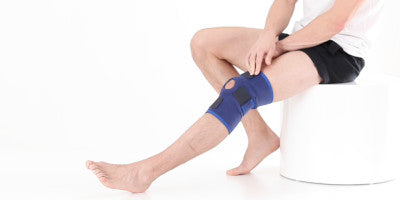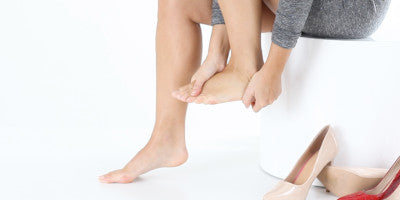Five Ways to Tackle Repetitive Strain Injury at Work

With 7% of all working people estimated to suffer from Repetitive Strain Injury (RSI) at some point in their working lives, it is clearly a serious and widespread matter. To help, Alex Clark physiotherapist at the UK’s leading orthopaedic support specialist Neo G, gives his top advice for how people can prevent and treat this common condition.
When it comes to jobs that are worst for you, you might be forgiven for thinking that working in an office would be the best bet for looking after your health and wellbeing. However, working at a desk comes with a whole host of potential problems, including the painful, and increasingly common risk of RSI.
Characterised by pain felt most commonly in the forearms, elbows, wrist and hands, RSI is caused by repetitive, frequent movements. This means it is increasingly common among office-based workers, who spend long periods of the day carrying out tasks like typing on a keyboard, picking up the phone or moving a mouse.

Identify the problem
The most common symptoms of RSI are pain, aching or tenderness, stiffness in the upper body, or a tingling or numbing feeling. You may first notice these symptoms when you’re carrying out a particular action, such as clicking your computer mouse or typing, but this may cause longer periods of pain as the condition persists.
Keep a diary of when symptoms are exacerbated and the activities which cause it and present this to your employer if the work you are doing appears to be a trigger. They may be able to modify your duties to alleviate your symptoms or provide you with a non-standard keyboard or mouse to improve the positioning of your hands.

Check your position
When it comes to preventing RSI and managing symptoms, your position at your desk can make all the difference. Review your desk space, setting up your keyboard to be in front of you when you are typing and leaving a gap of around 4-6 inches between the front of the desk and your keyboard. If there is not enough space between the desk edge and your keyboard then extra pressure can be put on joints, making RSI symptoms worse. Similarly, leaving too much space has the potential to put pressure on joints further up the arm.
If you regularly use a mouse, make sure it is as close as possible to you to avoid added strain. If the keyboard is not required while you use the mouse, then this should be moved aside to allow you to move the mouse as close to you as possible.

Take a walk
When working in a busy office it’s all too easy to let the hours fly by while you remain in the same position. However, try to avoid this behaviour where possible by taking regular breaks. Not only is sitting down for long periods bad for your general health and wellbeing, but hours of typing and clicking while in the same position will put you at greater risk of developing RSI and make existing symptoms worse.
Shake things up by getting up to walk around the office at least once an hour or, try holding walking meetings and standing up when taking phone calls. Anything which gets you out of your seat and breaks up repetitive movements will be beneficial for your general health and could help prevent RSI from developing.

Seek support
There are many products on the market which can help with the pain and provide added support to the affected area. Therapy packs, which can be used hot or cold, can help alleviate symptoms by helping with inflammation, stiffness and soothing aches and pains. For day to day support, elasticated and splinted supports can help stabilise the wrist and hand, helping pain and easing symptoms. Always go for quality products too; when it’s your health on the line it’s not worth scrimping. Neo G offer a full range of medical grade products that can help with the symptoms of RSI, available both instore and online.


Get a professional opinion
If your symptoms persist despite changing your habits in the office, seek advice from a professional. Your GP can advise anti-inflammatory painkillers which may help ease the painful symptoms. Alternatively, look to see a physiotherapist for some 1-2-1 advice. This can help you develop better posture, as well as helping to relax or strengthen different muscle groups, in turn relieving symptoms.

Our VCS range offers varying levels of support from mild to moderate to firm to provide optimum protection and stability. As a one size solution, these supports are fully adjustable to allow for a custom fit. In addition to this, the heat therapeutic neoprene helps to warm muscles and joints during exercise and rehabilitation, making the VCS range perfect for supporting instability during weights and gym training, as well as helping strains, sprains and weak, arthritic joints.

For support in everyday activities, the Airflow and Airflow+ ranges offer lightweight, slimline supports that protect and reduce the impact on joints and muscles. Perfect for taking a walk, playing sport or support with day to day strain.










